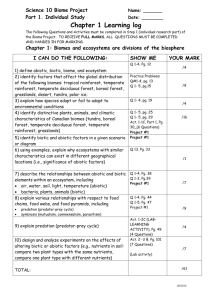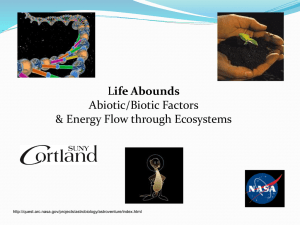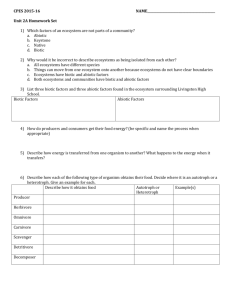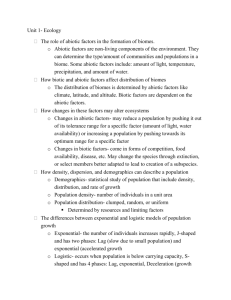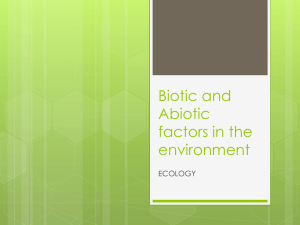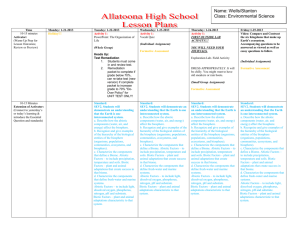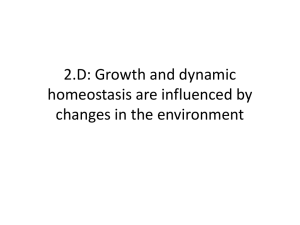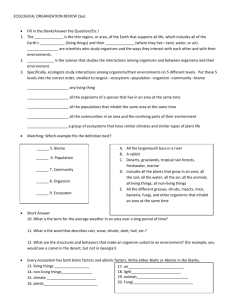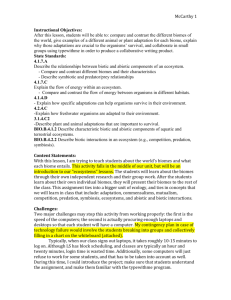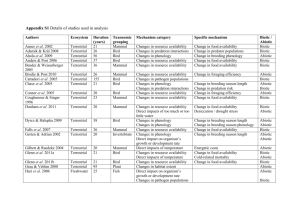File
advertisement
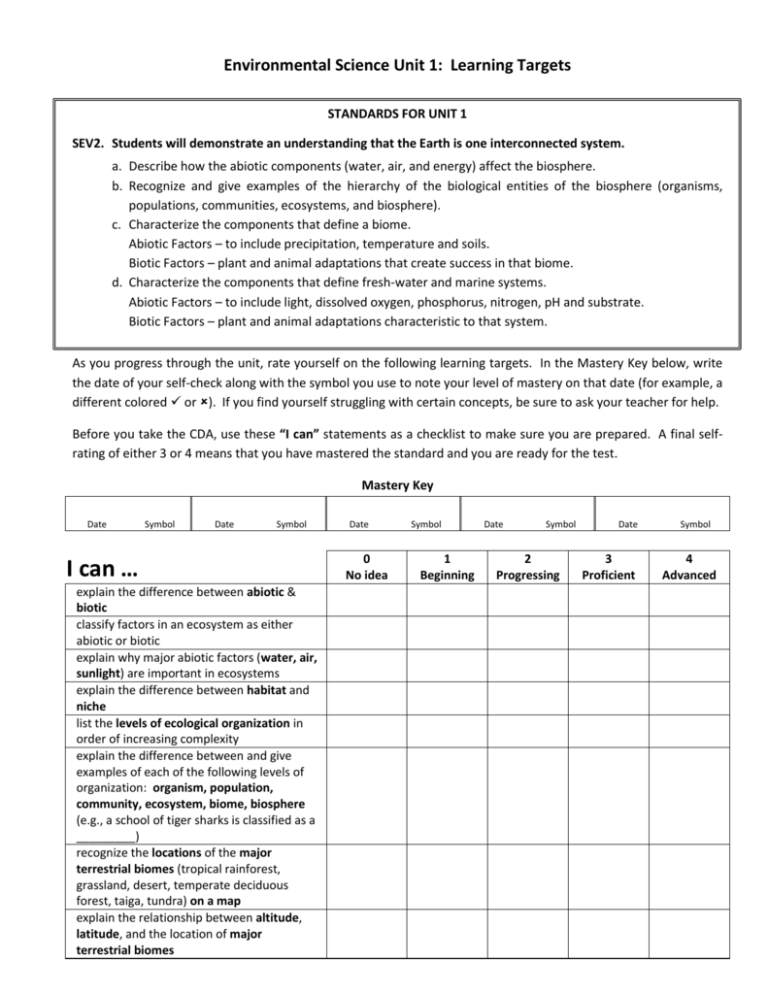
Environmental Science Unit 1: Learning Targets STANDARDS FOR UNIT 1 SEV2. Students will demonstrate an understanding that the Earth is one interconnected system. a. Describe how the abiotic components (water, air, and energy) affect the biosphere. b. Recognize and give examples of the hierarchy of the biological entities of the biosphere (organisms, populations, communities, ecosystems, and biosphere). c. Characterize the components that define a biome. Abiotic Factors – to include precipitation, temperature and soils. Biotic Factors – plant and animal adaptations that create success in that biome. d. Characterize the components that define fresh-water and marine systems. Abiotic Factors – to include light, dissolved oxygen, phosphorus, nitrogen, pH and substrate. Biotic Factors – plant and animal adaptations characteristic to that system. As you progress through the unit, rate yourself on the following learning targets. In the Mastery Key below, write the date of your self-check along with the symbol you use to note your level of mastery on that date (for example, a different colored or ). If you find yourself struggling with certain concepts, be sure to ask your teacher for help. Before you take the CDA, use these “I can” statements as a checklist to make sure you are prepared. A final selfrating of either 3 or 4 means that you have mastered the standard and you are ready for the test. Mastery Key Date Symbol Date Symbol I can … explain the difference between abiotic & biotic classify factors in an ecosystem as either abiotic or biotic explain why major abiotic factors (water, air, sunlight) are important in ecosystems explain the difference between habitat and niche list the levels of ecological organization in order of increasing complexity explain the difference between and give examples of each of the following levels of organization: organism, population, community, ecosystem, biome, biosphere (e.g., a school of tiger sharks is classified as a _________) recognize the locations of the major terrestrial biomes (tropical rainforest, grassland, desert, temperate deciduous forest, taiga, tundra) on a map explain the relationship between altitude, latitude, and the location of major terrestrial biomes Date 0 No idea Symbol 1 Beginning Date Symbol 2 Progressing Date 3 Proficient Symbol 4 Advanced Environmental Science Unit 1: Learning Targets I can … characterize each of the major terrestrial biomes according to major abiotic factors (precipitation, temperature, sunlight, & soil) characterize each of the major terrestrial biomes according to major biotic factors (animal and plant adaptations) characterize aquatic ecosystems (fresh water, marine, estuary) according to major abiotic factors (sunlight, salinity, water flow, water depth, dissolved oxygen) characterize aquatic ecosystems (fresh water, marine, estuary) according to major biotic factors (animal and plant adaptations) explain abiotic and biotic factors that contribute to the stability of an ecosystem 0 No idea 1 Beginning 2 Progressing 3 Proficient 4 Advanced
